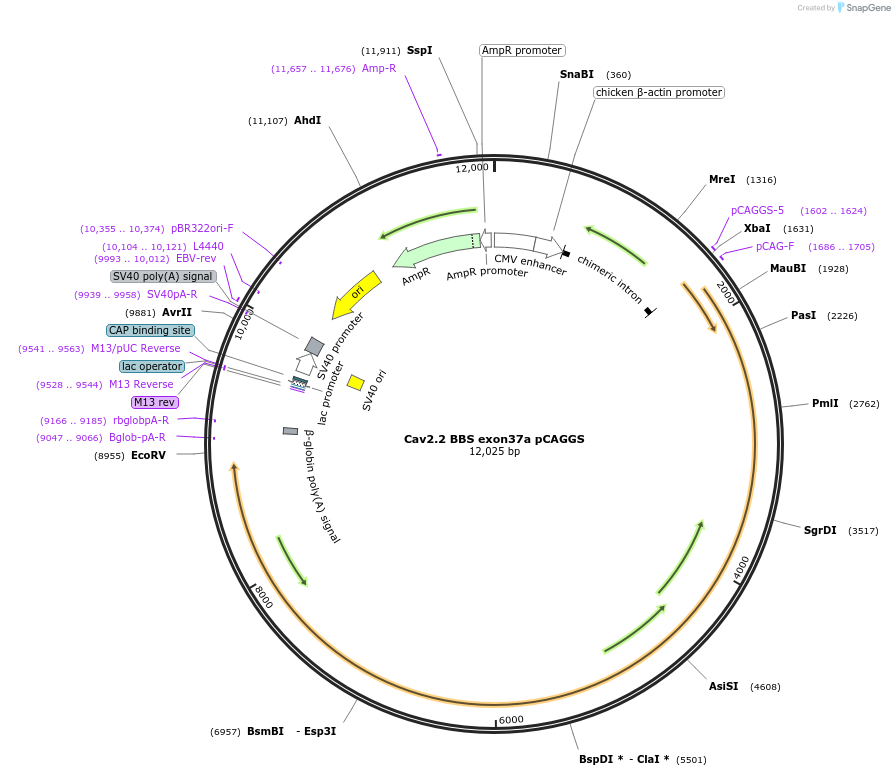Cav2.2 BBS exon37a pCAGGS
(Plasmid
#206086)
-
Purposeexpression of rabbit Cav2.2 calcium channel with an exofacial double Bungarotoxin Binding Site motif in domain II and alternative exon 37a
-
Depositing Lab
-
Sequence Information
Ordering
| Item | Catalog # | Description | Quantity | Price (USD) | |
|---|---|---|---|---|---|
| Plasmid | 206086 | Standard format: Plasmid sent in bacteria as agar stab | 1 | $85 | |
Backbone
-
Vector backbonepCAGGS
-
Backbone manufacturerPMID 11397804
- Backbone size w/o insert (bp) 4890
-
Vector typeMammalian Expression
Growth in Bacteria
-
Bacterial Resistance(s)Ampicillin, 100 μg/mL
-
Growth Temperature37°C
-
Growth Strain(s)DH5alpha
-
Copy numberHigh Copy
Gene/Insert
-
Gene/Insert namecacna1b
-
Alt nameCav2.2 alpha1B
-
SpeciesO. cuniculus (rabbit)
-
Insert Size (bp)7200
-
Entrez GeneCACNA1B
- Promoter CMV/B-actin
Cloning Information
- Cloning method Restriction Enzyme
- 5′ cloning site unknown (unknown if destroyed)
- 5′ sequencing primer CTCTGCTAACCATGTTCATGC
- 3′ sequencing primer CTGATAGGCAGCCTGCACCTG (Common Sequencing Primers)
Resource Information
-
A portion of this plasmid was derived from a plasmid made byYasuo Mori
Terms and Licenses
-
Academic/Nonprofit Terms
-
Industry Terms
- Not Available to Industry
Trademarks:
- Zeocin® is an InvivoGen trademark.
Depositor Comments
5' end of Cav2.2 DNA is very GC rich
These plasmids were created by your colleagues. Please acknowledge the Principal Investigator, cite the article in which the plasmids were described, and include Addgene in the Materials and Methods of your future publications.
-
For your Materials & Methods section:
Cav2.2 BBS exon37a pCAGGS was a gift from Annette Dolphin (Addgene plasmid # 206086 ; http://n2t.net/addgene:206086 ; RRID:Addgene_206086) -
For your References section:
Alternative Splicing in Ca(V)2.2 Regulates Neuronal Trafficking via Adaptor Protein Complex-1 Adaptor Protein Motifs. Macabuag N, Dolphin AC. J Neurosci. 2015 Oct 28;35(43):14636-52. doi: 10.1523/JNEUROSCI.3034-15.2015. 10.1523/JNEUROSCI.3034-15.2015 PubMed 26511252

